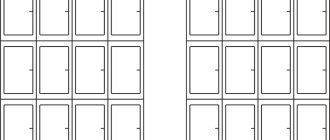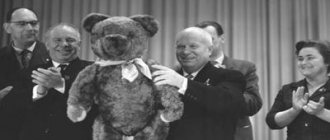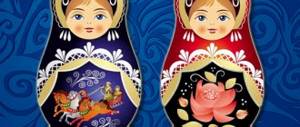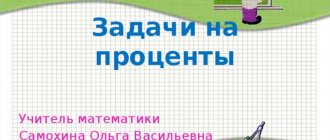Study the history of mathematics about the divisibility of numbers.
2. Learn the signs of divisibility by natural numbers from 2 to 25.
3. Study the properties of divisibility of numbers.
4. Explore the use of divisibility features in solving digital puzzles and practical problems.
Hypothesis:
signs of divisibility contribute to effective and rational problem solving.
Introduction.
We became interested in the history of divisibility of numbers.
Which ancient scientist studied the divisibility of numbers? Who is Eratosthenes? What is the sieve of Eratosthenes? What is a table of prime numbers? Is there a last prime number?
In mathematics lessons we studied the main signs of divisibility of numbers by 2,3,5, 9 and 10. But it turns out that there are many more signs of divisibility. There are signs of divisibility by 4, 8,11,13,7 and other numbers. The importance of divisibility signs is invaluable for the development of mental calculation skills, as well as for solving digital puzzles and some practical problems.
An ancient eastern parable:
Once upon a time there lived an old man who, when he died, left 19 camels to his three sons. He bequeathed half to his eldest son, a fourth to his middle son, and a fifth to his youngest. Unable to find a solution on their own (after all, the problem in “whole camels” has no solution), the brothers turned to the sage.
“Oh, sage!” said the elder brother. “My father left us 19 camels and ordered us to divide them among ourselves: the eldest – half, the middle – a quarter, the youngest – a fifth. But 19 is not divisible by 2, nor by 4, nor by 5. Can you, oh venerable one, help our grief, for we want to fulfill the will of our father?
“There is nothing simpler,” the sage answered them. - Take my camel and go home.
The brothers of the house easily divided 20 camels in half, into 4 and into 5. The eldest brother received 10, the middle one - 5, and the youngest - 4 camels. At the same time, one camel remained (10+5+4=19). Frustrated, the brothers returned to the sage and complained:
- Oh, sage, again we did not fulfill our father’s will! This camel is the odd one out.
“This is not superfluous,” said the sage, “this is my camel.” Return it and go home.
1. From the history of mathematics about the divisibility of numbers
Divisibility is
the ability of one number to be divided by another without a remainder. Divisibility tests were widely known during the Renaissance, since, using them, it was possible to reduce fractions with large numerators and denominators to an irreducible form.
ERATOSTHENES
(c. 275–194 BC), one of the most versatile scientists of antiquity. Eratosthenes dealt with a variety of issues - he carried out interesting research in the fields of mathematics, astronomy and other sciences. Eratosthenes' treatises were devoted to solving geometric and arithmetic problems.
The most famous mathematical discovery of Eratosthenes was the so-called “ sieve
", with the help of which prime numbers are found.
Divider
is a number that divides a given number without a remainder.
All integers (except 0 and 1) have at least two divisors: 1 and itself. Numbers that have no other factors are called prime numbers
.
Numbers that have other divisors are called composite
(or
complex
)
numbers
. There are an infinite number of prime numbers. The smallest prime number is 2, which is the only even prime number. All other prime numbers should be looked for among the odd numbers, but, of course, not every odd number is prime. So, for example, odd numbers 3, 5, 7, 11, 13 are simple, and such odd numbers as 9, 15, 21 are composite, 9 has 3 divisors, the number 15 has 4 divisors, etc. Any composite number can be decomposed into factors until it decomposes into only prime numbers. Prime numbers are like the primary elements from which all numbers are made.
In mathematics, Eratosthenes was interested in the question of how to find all the prime numbers among the natural numbers from 1 to N. Eratosthenes considered 1 a prime number. Mathematicians consider 1 to be a special type of number that is neither a prime nor a composite number. Eratosthenes came up with the following method for this. First, cross out all numbers divisible by 2 (excluding the number 2 itself). Then they take the first of the remaining numbers (namely 3). It is clear that this number is prime. Cross out all numbers coming after it that are divisible by 3. The first remaining number will be 5. Cross out all numbers coming after it that are divisible by 5, etc. The numbers that survive after all the crossings are prime. Since in the time of Eratosthenes they wrote on wax tablets and did not cross out, but “punctured” numbers, the tablet after the described process resembled a sieve. Therefore, Eratosthenes’ method for finding prime numbers was called the “sieve of Eratosthenes.”
B. Pascal made a great contribution to the study of divisibility criteria for numbers. Blaise Pascal
(Blaise Pascal) (1623–1662), French religious thinker, mathematician and physicist, one of the greatest minds of the 17th century. Young Blaise showed outstanding mathematical abilities very early, learning to count before he could read. He wrote his first mathematical treatise, “An Experience in the Theory of Conic Sections,” at the age of 24. Around the same time, he designed a mechanical adding machine, the prototype of the adding machine. Pascal's work in the field of exact sciences, or the early period of his work, dates back to the year. During these 10 years, the versatile scientist did a lot: he found an algorithm for finding signs of divisibility of any integer by any other integer, formulated a method for calculating binomial coefficients, outlined a number of basic principles of the elementary theory of probability, for the first time accurately defined and applied the method of mathematical induction for proof .
Pascal's divisibility test.
A natural number a will be divided by another natural number b only if the sum of the products of the digits of the number a by the corresponding remainders obtained by dividing the digit units by the number b is divisible by this number. For example: the number 2814 is divisible by 7, since 2*6 + 8*2 + 1*3 + 4 = 35 is divisible by 7. (Here 6 is the remainder of dividing 1000 by 7, 2 is the remainder of dividing 100 by 7 and 3 is the remainder of 10 divided by 7).
2. Signs of divisibility
Test for divisibility by 2.
A number is divisible by 2 if and only if its last digit is even.
Example:
12
4
, 20
0
, 15
2
, 6
8
, 40
6
.
Test for divisibility by 3.
A number is divisible by 2 if and only if the sum of its digits is divisible by 3.
Example:
144 by 3, because 1+4+4 =9 is divisible by 3.
Test for divisibility by 4.
A number is divisible by 4 if and only if its last two digits form a two-digit number divisible by 4.
Example:
7
24
is divisible by 4 because 24 is divisible by 4.
Test for divisibility by 5.
A number is divisible by 5 if and only if it ends in 0 or 5.
Example:
72
0,
65
5
are divisible by 5.
Test for divisibility by 6.
A number is divisible by 6 if and only if it is even and divisible by 3.
Example:
720 is divisible by both 2 and 3.
Test for divisibility by 7.
A number is divisible by 7 if and only if the result of subtracting twice the last digit from the tens number is divisible by 7.
Example:
259 is divisible by 7, because 25 - (2 * 9) = 7 is divisible by 7.
Test for divisibility by 8.
A number is divisible by 8 if and only if its last three digits form a number divisible by 8.
Example:
6
136
is divisible by 8 because 136 is divisible by 8.
Test for divisibility by 9.
A number is divisible by 9 if and only if the sum of its digits is divisible by 9.
Example:
6102 is divisible by 9, because 6+1+0+2 = 9 is divisible by 9.
Test for divisibility by 10.
A number is divisible by 10 if and only if it ends in 0.
Example:
72
0
divisible by 10.
Test for divisibility by 11.
A number is divisible by 11 if and only if the modulus of the difference between the sum of the digits in odd places and the sum of the digits in even places is divisible by 11
Get full text
Example:
100397 is divisible by 11 because .
1+0+9=10; 0+3+7=10; =0 (numbering goes from left to right).
You can check whether a number is divisible by 11 in another way:
The test number is divided from right to left into groups of two digits each and these groups are added. If the resulting sum is a multiple of 11, then the number being tested is a multiple of 11.
Example:
15235 is divisible by 11, because dividing into groups and adding them: 1+52+35=88 is divisible by 11.
Test for divisibility by 12.
A number is divisible by 12 if and only if it is divisible by both 3 and 4.
Example:
72
0
is divisible by 12 because the number is divisible by both 3 and 4.
Test for divisibility by 13.
The number is divisible by 13 then:
- when the sum of the number of tens and quadruple the number of ones is divided by 13.
Example:
845 is divisible by 13, since 84+ 5*4 = 104 and 10+4*4=26 are divisible by 13.
- when the difference between the number of tens and nine times the number of ones is divided by 13.
Example:
845 is divisible by 13, since 84-9*5=39 is divisible by 13.
Test for divisibility by 14.
A number is divisible by 14 if and only if it is divisible by both 2 and 7.
Example:
42
0
is divisible by 14 because the number is divisible by both 2 and 7.
Test for divisibility by 15.
A number is divisible by 15 if and only if it is divisible by both 3 and 5.
Example:
42
0
is divisible by 15 because the number is divisible by both 2 and 5.
Test for divisibility by 17.
The number is divisible by 17 then:
- when the modulus of the difference between the number of tens and five times the number of ones is divided by 17.
Example:
221 is divisible by 17 because it is divisible by 17.
- when the modulus of the sum of the number of tens and twelve times the number of ones is divided by 17.
Example:
221 is divisible by 17 because it is divisible by 17.
Test for divisibility by 18.
A number is divisible by 18 if and only if it is divisible by both 2 and 9.
Example:
432 is divisible by 18 because the number is divisible by both 2 and 9.
Test for divisibility by 19.
A number is divisible by 19 if and only if the number of tens added to twice the number of units is divisible by 19.
Example:
646 is divisible by 19 because 19 is divisible by
Test for divisibility by 20.
A number is divisible by 20 if and only if the number formed by the last two digits is divisible by 20.
Another formulation: a number is divisible by 20 if and only if the last digit of the number is 0 and the penultimate digit is even.
Example:
640 is divisible by 20, since 40 is divisible by 20.
Test for divisibility by 21.
A number is divisible by 21 if and only if it is divisible by both 3 and 7.
Example:
231 is divisible by 21 because the number is divisible by both 3 and 7.
Test for divisibility by 22.
A number is divisible by 22 if and only if it is divisible by both 2 and 11.
Example:
352 is divisible by 22 because the number is divisible by both 2 and 11.
Test for divisibility by 23.
Sign 1
: A number is divisible by 23 if and only if the hundreds number added to triple the number formed by the last two digits is divisible by 23.
Example:
28842 is divisible by 23, since 23 is also divisible by 23.
Sign 2
: a number is divisible by 23 if and only if the number of tens added to seven times the number of units is divisible by 23.
Example:
391 is divisible by 23 because it is divisible by 23.
Sign 3
: a number is divisible by 23 if and only if the number of hundreds added to seven times the number of tens and triple the number of units is divisible by 23.
Example:
391 is divisible by 23 because it is divisible by 23.
Test for divisibility by 24.
A number is divisible by 24 if and only if it is divisible by both 3 and 8.
Example:
8136 is divisible by 24 because the number is divisible by both 3 and 8.
Test for divisibility by 25.
A number is divisible by 25 if and only if its last two digits form a number that is divisible by 25.
Example:
175 is divisible by 25 because 75 is divisible by 25.
3. Properties of divisibility of numbers.
When solving divisibility problems, properties associated with the sequential arrangement of natural numbers are often useful.
• One of the
consecutive natural numbers are divisible by
n;
Example: 3; 4; 5; 6; 7 – 5 consecutive natural numbers, 5 is divisible by 5.
• One of two consecutive even numbers is divisible by 4;
Example: 10;consecutive even numbers, 12 is divisible by 4.
• The product of three consecutive natural numbers is divisible by 6;
Example: 5*6*7=divisible by 6, because 210 is divisible by 2 and 3.
• The product of two consecutive even numbers is divided by 8.
Example: 4*6=24 24 is divisible by 8.
• Property 1. If each term of a sum is divisible by the same number, then the sum is also divisible by this number.
Example: 66 + 121= 187 is divisible by 11, because 66 and 121 are divisible by 11.
• Property 2. If the minuend and the subtrahend are divisible by the same number, then the difference is also divisible by this number.
Example: 1125 – 75 = 1050 is divided by 25, because 1125 and 75 are divisible by 25
• Properties 3. If in a product of several natural numbers at least one of the factors is divisible by some number, then the entire product is divisible by this number.
Example: 21*5*9 = 945 is divisible by 7, since 21 is divisible by 7.
• Property 4. If some integer is divisible by another, and this other is divisible by a third, then the first number is also divisible by the third.
Example: 171 is divisible by 57, and 57 is divisible by 19, so 171 is divisible by 19.
4. Application of divisibility criteria in solving digital puzzles and practical problems.
Task No. 1.
The travel agency “Duremar” offered Karabas three trips “to the land of Fools” - two for adults and one for children for 3,543 gold coins. It is known that a child's trip is 500 gold coins cheaper. How was Karabas able to understand that he was being deceived?
Solution.
3543+500= 4043, but 4043 is not divisible by 3.
Problem No. 2
Seven friends. One citizen had 7 friends.
The first visited him every evening, the second - every second evening, the third - every third evening, the fourth - every fourth evening, and so on until the seventh friend, who appeared every seventh evening.
Did it often happen that all seven friends met at the owner’s house on the same evening?
Solution.
Solved using divisibility tests by 2, 3, 4, 5, 6, 7. GCD (2, 3, 4, 5, 6, 7) = 420
Answer: 1 time in 420 days.
Task No. 3
Write some nine-digit number that has no repeating digits (all digits are different) and is divisible by 11 without a remainder. Write the largest of these numbers. Write the smallest of these numbers.
Solution.
We use the test of divisibility by 11.
Answer: ;
Problem No. 4
Vanya conceived a simple three-digit number, all of whose digits are different. What digit can it end in if its last digit is equal to the sum of the first two. Give examples of such numbers.
Solution
Only at 7.
The answer is 167, 257, 347, 527.
Problem No. 5
Find the largest four-digit number, all of whose digits are different and which is divisible by 2, 5, 9, 11.
Answer: 8910.
Task No. 6.
Katya claims that she came up with a test for divisibility by 81: “If the sum of the digits of a number is divisible by 81, then this number itself is divisible by 81.” Is Katino's statement true? If yes, then prove it. If not, give an example refuting Katya's example.
Answer: refuting example.
Task No. 7.
The product of the digits of a three-digit number is 135. What is the sum of the digits of this number?
Solution.
The number 135 is divisible by 5, 3, 9, which means the number consists of these digits, the sum of these digits is 17.
Answer: 17.
Problem No. 8
Petya's bank account contains $500. The bank allows only two types of transactions: withdrawing $300 or adding $198. What is the maximum amount Petya can withdraw from his account if he has no other money?
The concept of digit and number
Some novice mathematicians confuse numbers and numbers. However, having analyzed their wording, you can easily understand the difference between them. A number is a mathematical sign (symbol) that is used to form a bit grid.
The latter is a certain sequence of mathematical symbols that has a quantitative characteristic.
The grid consists of digits, in each of which one digit from 0 to 9 is written. Based on this, the digit grid consists of the following components, which together form a number:
These concepts are studied in the elementary grades of general education institutions. However, to study a technique that allows you to determine which numbers are divisible by 6. In middle grades, starting from the 5th grade, various reports and projects are prepared that allow you to consider the use of signs of divisibility of one number by another in a more detailed form.
Number is a quantitative characteristic consisting of a bit grid. In other words, it consists of numbers arranged in strict sequence.
Every student should understand this important property as it allows them to understand the basic difference between a number and a numerical value. Next, you need to move on to the technique of dividing by six.










